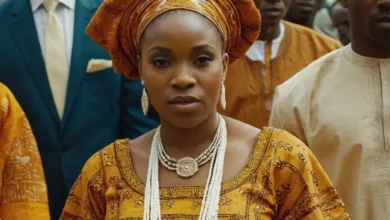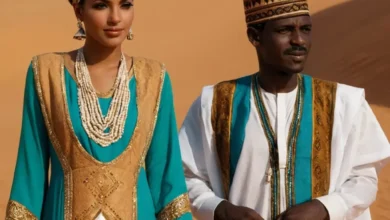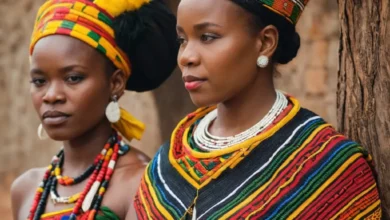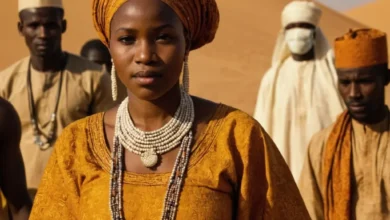Libyan Traditional Clothing
The vast expanse of the Libyan desert, with its searing heat and harsh conditions, has shaped not only the physical landscape but also the cultural identity of its people. This enduring connection is reflected in the rich and varied traditions of Libyan clothing, designed for both practicality and cultural expression.
Libyan traditional clothing, often referred to asLibyan thobe for men andLibyan dishdasha for women, goes beyond simply providing cover. It represents a deeply ingrained connection to the land, its heritage, and the enduring values of its people. This article delves into the intricate details of Libyan traditional clothing, exploring its evolution, the significance of its design, and its enduring role in contemporary Libyan society.
The Evolution of Libyan Traditional Clothing
The history of Libyan traditional clothing is intertwined with the nomadic lifestyle that characterized the region for centuries. The harsh desert environment demanded practicality and adaptability, shaping the development of clothing that could withstand the extreme temperatures and protect wearers from the elements.
Early Influences
The earliest evidence of Libyan clothing dates back to ancient times, influenced by the civilizations that thrived in North Africa. Theberni (Libyan turban), for example, is believed to have originated from the Berber tradition, and its practicality as a head covering in the desert was recognized from the earliest times.
See also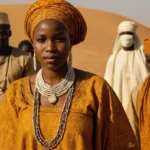 Malian Traditional Clothing: The Rich Textiles and Styles of West Africa
Malian Traditional Clothing: The Rich Textiles and Styles of West Africa
Early Libyans used natural materials like wool and leather, often dyed with vegetable pigments obtained from local plants, to create durable clothing that could withstand the harsh desert climate.
Medieval and Ottoman Influences
During the medieval period, Libyan clothing was influenced by trade routes and cultural exchanges with neighboring regions. The introduction of cotton from the Middle East brought a new level of comfort and breathability to the clothing.
During the Ottoman era, the influence of Turkish fashion was evident in the introduction of thekaftan (long coat) for men and theabayas (loose outer garments) for women. These styles, though adapted to the Libyan context, reflected the cultural exchange taking place within the region.
Modern Adaptations
While traditional Libyan clothing remains deeply rooted in the country’s heritage, it has also undergone significant adaptations in modern times. The introduction of synthetic fabrics, like polyester, has increased durability and ease of maintenance. New designs and color combinations have emerged, reflecting a blending of traditional elements with contemporary sensibilities.
See also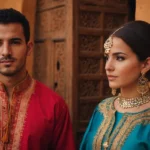 Moroccan Traditional Clothing: From Djellabas to Kaftans
Moroccan Traditional Clothing: From Djellabas to Kaftans
Thethobe anddishdasha, once primarily worn in rural communities, have become increasingly popular in urban centers. This shift reflects a growing sense of cultural pride and a desire to embrace the traditions of the past. Many Libyans, particularly younger generations, choose to wear traditional clothing for special occasions, festivals, and celebrations.
Significance of Design and Symbolism
Libyan traditional clothing is not simply a practical garment; it is a canvas for cultural expression, embodying the values and beliefs of the Libyan people. Each element of the clothing carries a specific meaning, reflecting the importance of family, tradition, and faith.
TheThobe
Thethobe, the traditional long robe worn by Libyan men, is characterized by its simple, loose-fitting design. The generous cut allows for air circulation, keeping the wearer cool in the scorching desert heat. Thethobe is typically made of white cotton, symbolizing purity and cleanliness. Theberni (turban), often worn with thethobe, signifies respect, tradition, and the importance of community.
TheDishdasha
Thedishdasha, worn by Libyan women, shares similar characteristics with thethobe, with a long, loose-fitting design and a preference for white cotton. However, thedishdasha often features intricate embroidery, adding a touch of elegance and femininity.
The embroidery patterns, often passed down through generations, represent family history, cultural heritage, and the artistic traditions of the Libyan people. Theabayas, often worn over thedishdasha, are symbolic of modesty and respect for tradition.
The Importance of Color
Color plays a significant role in Libyan traditional clothing. While white is the dominant color, symbolizing purity and spirituality, other colors are incorporated for special occasions. For example, beige and brown tones are often associated with the desert landscape, while shades of blue and green represent the Libyan coastline. The use of these colors reflects the importance of respecting the natural environment and its influence on Libyan culture.
Libyan Traditional Clothing in Contemporary Society
Despite the influences of modern fashion trends, Libyan traditional clothing remains a vital part of the country’s cultural identity. The clothing serves as a tangible link to the past, reminding Libyans of their heritage and the values that have shaped their society. It also represents a source of pride and a way for individuals to connect with their community.
Celebrations and Festivals
Libyan traditional clothing is particularly prominent during religious festivals and cultural celebrations. During the month of Ramadan, for example, many Libyans choose to wear traditional clothing as a sign of respect and devotion. At weddings and other celebrations, vibrant colors and intricate embroidery are often seen, reflecting the joy and festivity of the occasion.
Bridal Attire
Libyan wedding traditions place a particular emphasis on traditional clothing. Brides often wear a lavishdishdasha adorned with intricate embroidery, often featuring the colors of gold and silver, symbolizing wealth and prosperity. The elaborate headwear, often featuring a veil or a crown-like ornament, further emphasizes the significance of the occasion.
A Symbol of Unity
In a country with diverse cultural and tribal traditions, Libyan traditional clothing serves as a unifying symbol. Despite the different cultural nuances within each region, the shared heritage of thethobe and thedishdasha provides a sense of commonality and unity across Libya. The wearing of traditional clothing strengthens a sense of national identity and promotes a sense of shared heritage.
FAQs
How do Libyans adapt their traditional clothing for different seasons?
The simplicity and loose-fitting nature of Libyan traditional clothing allows for easy adaptation to different temperatures. During the summer months, Libyans often wear lightweight cotton fabrics, while heavier fabrics, like wool, are preferred during the cooler months.
Are there regional variations in Libyan traditional clothing?
While the basic design of thethobe and thedishdasha remains consistent across Libya, there are regional variations in embroidery, color choices, and the use of specific accessories. These variations often reflect local traditions, craftmanship, and cultural preferences.
What are some of the challenges facing the preservation of Libyan traditional clothing?
The globalization of fashion trends and the influence of Western clothing have led to a decline in the popularity of traditional clothing, especially among younger generations. The preservation of traditional skills, such as embroidery and weaving, is also challenged by the changing economic landscape and the availability of mass-produced clothing.
However, efforts to promote and preserve these traditions are ongoing, including the establishment of workshops and cultural centers dedicated to the continuation of Libyan traditional crafts.
Libyan traditional clothing is more than just garments; they are a reflection of a rich and enduring cultural heritage. They embody the resilience of the Libyan people, their adaptation to the challenging desert environment, and their deep connection to their ancestral traditions. From the practicality of its design to the symbolism embedded in its details, Libyan traditional clothing continues to shape and inspire generations of Libyans, providing a tangible link to the past and a source of pride for the future.
As Libya navigates the challenges of modernity and globalization, the preservation of its traditional clothing remains crucial. By embracing and celebrating these traditions, Libyans can ensure that their heritage remains vibrant and relevant for future generations. The enduring legacy of Libyan traditional clothing serves as a reminder of the enduring power of culture to shape identity and connect people across time and space.
